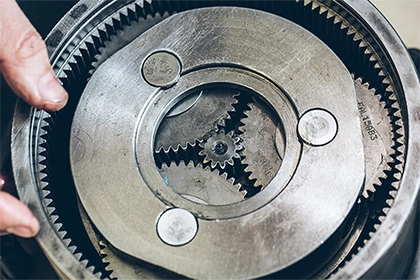
Can we control the speed in a PMDC motor?
We'll examine if it's possible to regulate a PMDC motor's speed in this article and give you some pointers on how to achieve so.
PMDC (Permanent Magnet DC) motors are commonly used in a wide range of applications, from small toys to heavy machinery. One of the most important factors that affect their performance is the speed at which they operate. In this article, we'll explore whether it's possible to control the speed of a PMDC motor and provide you with some tips on how to do so.
Firstly, let's understand the basics of a PMDC motor. PMDC motors consist of a stator (stationary part) and a rotor (rotating part) that are both made of permanent magnets. The stator has a series of coils that are arranged in a circular pattern, and the rotor has an armature that contains windings. When a current is passed through the coils, a magnetic field is created that interacts with the magnetic field of the rotor. This creates a torque that causes the rotor to rotate.
Now, can we control the speed of a PMDC motor? The short answer is yes. In fact, PMDC motors are easier to control than many other types of motors because their speed is directly proportional to the voltage applied to them. This means that by varying the voltage, we can easily control the speed of the motor. However, it's not as simple as just increasing or decreasing the voltage.
There are a few factors that can affect the speed of a PMDC motor , including the load on the motor, the resistance of the armature, and the type of motor controller used. Let's take a closer look at each of these factors and how they can affect the speed of the motor.
Load on the motor: The load on the motor refers to the amount of work that the motor has to do. The more work the motor has to do, the slower it will operate. This is because the motor needs to exert more torque to overcome the resistance of the load. Therefore, if you want to increase the speed of the motor, you need to reduce the load on it.
Resistance of the armature: The armature of the motor has a resistance that affects the speed of the motor. The higher the resistance of the armature, the slower the motor will operate. This is because the current flowing through the armature will create heat, which can cause the motor to overheat if it's not properly controlled. Therefore, if you want to increase the speed of the motor, you need to reduce the resistance of the armature.
Type of motor controller: The motor controller is responsible for controlling the speed of the motor. There are two main types of motor controllers: linear and pulse width modulation (PWM). Linear controllers vary the voltage applied to the motor by using a potentiometer, while PWM controllers vary the duty cycle of the voltage applied to the motor. PWM controllers are more efficient and offer better control over the speed of the motor.
Now that we understand the factors that affect the speed of a PMDC motor, let's look at some tips on how to control the speed of the motor.
-
Use a PWM motor controller: As mentioned earlier, PWM motor controllers are more efficient and offer better control over the speed of the motor. They're also less likely to cause the motor to overheat.
-
Reduce the load on the motor: If you want to increase the speed of the motor, you need to reduce the load on it. This can be done by reducing the weight of the load or by using a more efficient mechanism to transfer the load.
-
Reduce the resistance of the armature: If the armature of the motor has a high resistance, it can cause the motor to operate at a slower speed. To increase the speed of the motor, you need to reduce the resistance of the armature. This can be done by using a motor with a lower resistance armature
or by modifying the armature by adding more windings.
-
Use feedback control: Feedback control involves using sensors to monitor the speed of the motor and adjusting the voltage accordingly to maintain a constant speed. This is a more advanced technique and is commonly used in industrial applications.
-
Use gearing: Gearing involves using a gearbox to reduce the speed of the motor while increasing the torque output. This can be useful when you need to operate the motor at a lower speed, but with higher torque.
In conclusion, controlling the speed of a PMDC motor is definitely possible, and there are several ways to do it. By using a PWM motor controller, reducing the load on the motor, reducing the resistance of the armature, using feedback control, or using gearing, you can easily control the speed of the motor to suit your application's requirements. It's important to keep in mind that each application is unique, and the optimal solution may vary depending on the specific circumstances. By following these tips, you can effectively control the speed of your PMDC motor and optimize its performance.



Leave a Comment